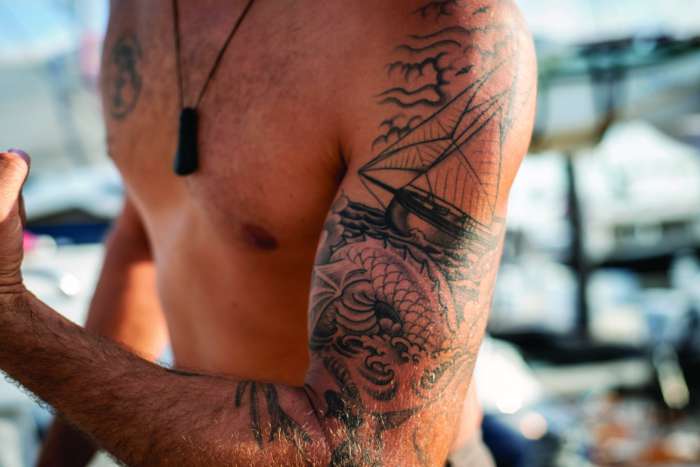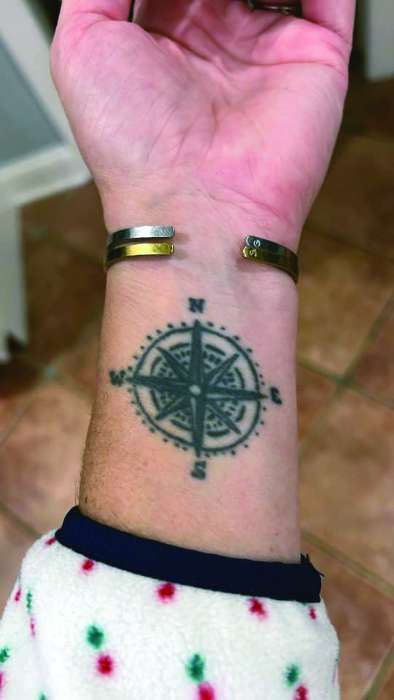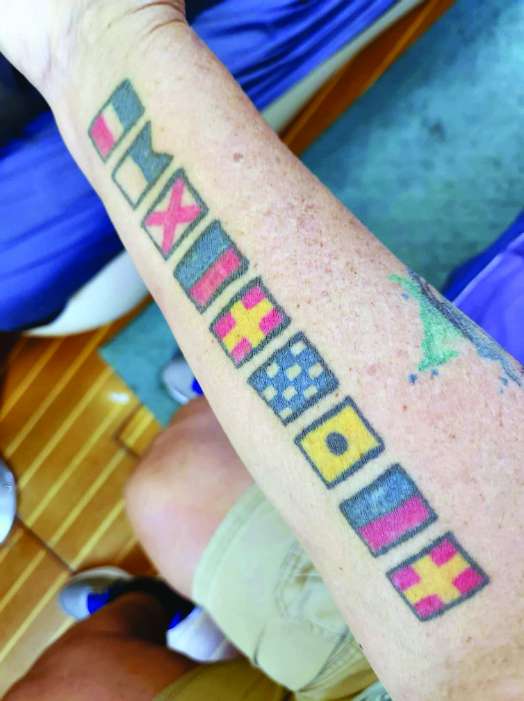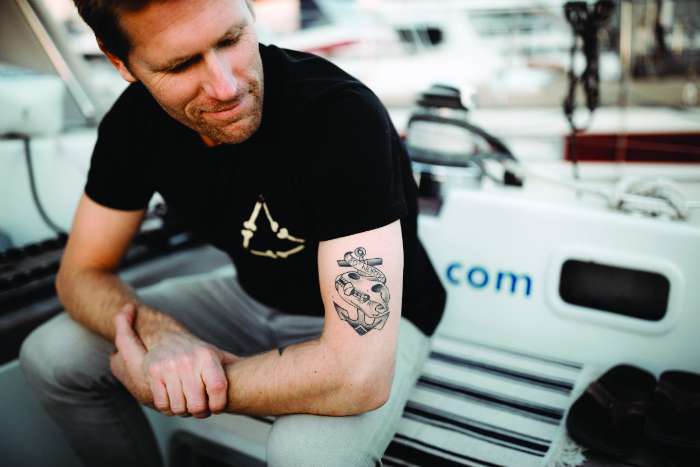Sailor Tattoos and How They Came To Be
From equipment advancements to drastically different styles of art, tattooing has evolved into a widely practiced form of self-expression and creativity, all of which would not exist without sailing.

There are records of European sailors practicing tattoos since the 16th century, but the word ‘tattoo’ was introduced into European culture in the 18th century. Captain James Cook returned from Tahiti where he had learned the Polynesian word, “tatau,” meaning “to mark,” which was traditionally performed with tools made from boar tusks.
The technique typically used by European and American sailors in the early 18th century was to poke a wound on the body and rub gunpowder or soot into it. Sailors used tattooing as a way to stay occupied during their time at sea, sharing their tattooing skills with other seamen, as well as with those they met in port.
Their characteristic bluish hue developed into recognizable symbols ranging from nautical to religious, as well as romantic and patriotic. Tattoos were considered a savvy souvenir for sailors, as they were easily transportable and extremely durable. They were also used as personal identifiers when a body was retrieved from the sea.

Increased demand for tattoos led to the invention of an electric machine around the 1890s. Tattoo artists started drawing “flash” tattoo designs that were usually simple black outlines with limited colors. The name flash comes from the fact that tattoos were still considered a prohibited act at the time and by having pre-drawn posters of designs, artists could quickly flash their clients with a selection of art. Sailors appreciated the convenience of flash posters, because it allowed them to use their time efficiently when they were allowed to go ashore for limited time.
Naval branches noted the increasing popularity among sailors, but drew the line when sailors showed up with tattoos of nude women, refusing these men into the service. This led to a new niche of tattoo artists who specialized in “cover-ups,” where they were covering up the girls with more acceptable attire.

Tattoo shops began opening in ports in America and England, with artists donning the name “Sailor” before their own, such as Sailor Jerry, who became a renowned tattoo artist with his iconic “old school” style that is still wildly popular today and can be seen depicted on his popular rum labels. Artists began buying and selling designs between their shops as a way to share art and continue expanding and connecting the tattoo community.
Sailors had a variety of reasons why they might select a certain design, but whatever the choice, the art became a part of the sailor’s identity. One sailor might get a talisman for protection. Another might memorialize a significant life encounter, and another might get one just to be rebellious. By the 1950s, the style of sailor tattoos grew to be quite popular with the general public.
Nautical Star or Compass Rose: This was meant to help sailors navigate back home safely, as the nautical star represented the north star. It is typically depicted with five points and coordinated colors to represent a compass rose as seen on navigation charts.
Pig and Rooster/Hen: With the right foot bearing a chicken and the left a pig, these symbols were meant to protect a sailor from drowning, because these animals reputedly survived shipwrecks thanks to their floating wooden crates.
Hold Fast: Tattooed across the knuckles, this was meant to support crew members’ grasp of rigging onboard, especially during rough storms. It also was encouragement for perseverance during rough conditions at sea.
Crosses and Crucifixes: Crosses that were tattooed on feet were meant to protect sailors from shark attacks in case of falling overboard or in a shipwreck.
Swallow: When a sailor completed their first 5000 nautical miles, they would get a swallow on their chest. When they reached 10,000 nm, they would get one on the other side of their chest. The reasoning behind this symbol is that these birds travel far away from home and safely return again.
Fully rigged ship: This tattoo was usually worn by those who successfully navigated around Cape Horn.

Anchor/Crossed Anchors: This was a marker for a sailor who had crossed the Atlantic, someone who has served at sea or was promoted in the military. Crossed anchors, placed between the forefinger and thumb, indicated a boatswain’s mate. Sometimes the anchor was meant to commemorate a first-time sailor’s initiation into the service.
Crossed cannons or guns: Meant the sailor had been involved in naval service, sometimes seen in conjunction with specific symbols from the U.S. Navy.
Rope around the wrist: A sailor was a deckhand.
Harpoon: A sailor was a member of a whaling or fishing fleet.
Shellback or King Neptune: This tattoo was earned when sailors crossed the equator.
Golden Dragon: Sailors got this when they crossed the International Date Line.
Golden Shellback: Reserved for the achievement of crossing the equator and international date line at the same time.
Dragon: Sailors with dragons usually had spent some time in China, while it was later on indicative of service in the Western Pacific Ocean. The dragon also represented good luck and strength.
Hula Girl or Palm Tree: Sailors had either sailed to or been stationed in Hawai’i.
Dagger piercing heart: This represented a relationship ending with an affair, and was sometimes seen with the words, “Death Before Dishonor” beneath it.
Propellers: A propeller was tattooed on each buttock in order to symbolize the sailor being propelled home safely.
Sombrero: Usually depicted on a pinup girl, this indicated a sailor who had been on a ship who had taken port in the San Pedro or San Diego area, or involvement in Latin American service.
Polar Bear: Though rare, this would be a tattoo recognizing someone as a Blue Nose sailor, meaning that the sailor has crossed the Arctic Circle. A golden polar bear represents a submarine that has surfaced above the fifth parallel.
Dolphin: A symbol that was used among sailors in naval submarine service and as a warfare motif.
Little Red Devils: These tattoos were given to “snipes,” crew who in the mid-19th century worked with heavy machinery and feeding coal to steam engines, resulting in a hot environment reminiscent of hell. Some of the professions included in the snipes category included engineers, electricians, and technicians.
~By Chelsea Co
Send us a photo of your sailor tattoo to [email protected].
Learn more: Resources for tattoo history include: historynet.com/sailor-tattoos-through-the-ages, sailorjerry.com/en/tattoos, and history.navy.mil/browse-by-topic/heritage/customs-and-traditions0/sailor-s-tattoos.html.
Find more sailing articles here.




